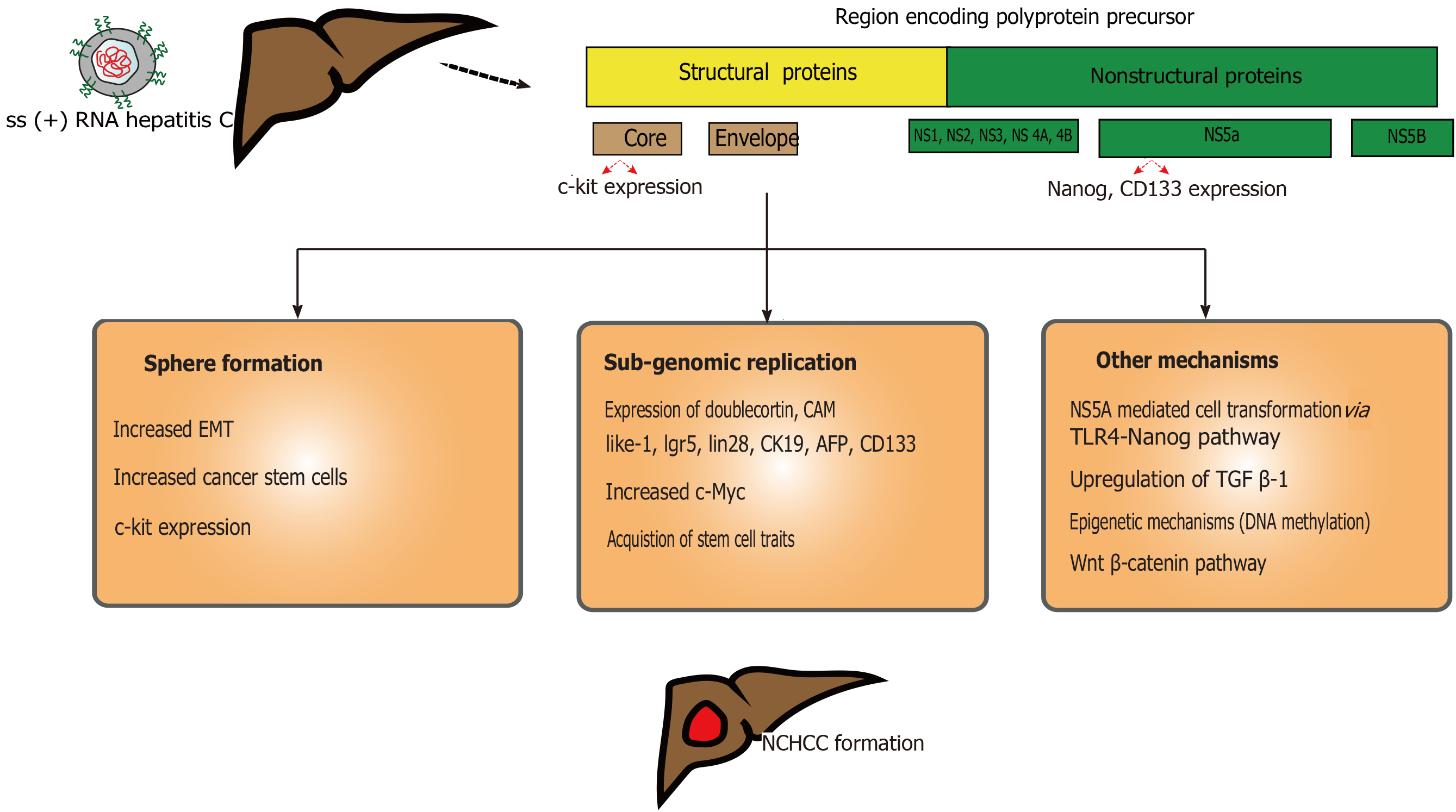Copyright
©The Author(s) 2021.
World J Gastroenterol. Jun 28, 2021; 27(24): 3466-3482
Published online Jun 28, 2021. doi: 10.3748/wjg.v27.i24.3466
Published online Jun 28, 2021. doi: 10.3748/wjg.v27.i24.3466
Figure 2 Mechanisms of oncogenesis in hepatitis C virus induced non-cirrhotic hepatocellular carcinoma.
Entry of single stranded hepatitis C virus (HBV) RNA into hepatocytes leads to expression of multiple oncogenic proteins. The core section and NS5A sections of the HCV genome produces c-Kit and Nanog-CD133 proteins respectively. HCV infected hepatocytes can lead to sphere formation, sub-genomic replication formation and multiple other mechanism are noted in the schema. Ss: Single stranded; NS: Non-structural; c-Kit: Proto-oncogene, Cam Kinase-like-1; Lgr5: Leucine rich G-protein receptor; CD: Cluster of differentiation; Lin28: RNA binding protein; CK19: Cytokeratin 19; AFP: Alfa fetoprotein; TLR4: Toll-like receptor 4; TGFβ-1: Transforming growth factor-1; NCHCC: Noncirrhotic hepatocellular carcinoma.
- Citation: Perisetti A, Goyal H, Yendala R, Thandassery RB, Giorgakis E. Non-cirrhotic hepatocellular carcinoma in chronic viral hepatitis: Current insights and advancements. World J Gastroenterol 2021; 27(24): 3466-3482
- URL: https://www.wjgnet.com/1007-9327/full/v27/i24/3466.htm
- DOI: https://dx.doi.org/10.3748/wjg.v27.i24.3466









